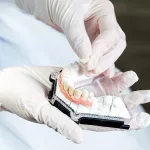Most people don’t realize that a short‑course of prednisolone can feel like a roller‑coaster – one minute your swelling is under control, the next you’re battling a sudden appetite surge or restless nights. Below you’ll get a quick‑read guide that spells out the most common and serious side effects, why dose and duration matter, and practical steps to keep them in check – all without the medical‑jargon.
Hey, I’m Dr. Maria López, a rheumatology specialist with twelve years of experience helping people live with arthritis, asthma and a whole lot of steroid‑related questions. I’ve seen the relief prednisolone can bring, and I’ve also watched patients stumble over unwanted side effects. Let’s chat about what to expect, how to manage prednisolone side effects, and when it’s time to call your doctor.
Quick Overview
What is prednisolone?
Prednisolone is a synthetic corticosteroid that mimics cortisol – the hormone your adrenal glands release when you’re stressed or fighting inflammation. In plain English, it tells your immune system to “slow down,” which is why doctors prescribe it for a wide range of conditions.
Why is it prescribed? (prednisolone uses)
Typical prednisolone uses include:
- Rheumatoid arthritis and other inflammatory joint diseases
- Severe asthma or COPD flare‑ups
- Skin disorders such as eczema or psoriasis
- Autoimmune diseases like lupus
- Allergic reactions that won’t subside with antihistamines
In short, if inflammation is the villain, prednisolone is often the hero – but, like any hero, it can bring along a few sidekicks you’ll want to keep an eye on.
Dose & Duration
How dose shapes side effects
The relationship between prednisolone dosage and side effects is fairly linear: the higher the dose, the higher the risk. According to the NHS, people on a relatively low daily dose (e.g., 5 mg) are far less likely to experience weight gain or bone loss than those on 20 mg or more.
Short‑term vs. long‑term therapy
Most people take prednisolone for a few weeks to tame an acute flare. In that time you might notice “instant” side effects like stomach upset or mood swings. If the drug stretches into months, the body’s response changes – you may start seeing rounder faces, increased blood pressure, or even osteoporosis.
Special populations
Children, seniors, and pregnant individuals need extra caution. Children’s growth plates can be affected, while seniors are more prone to fractures. If you fall into any of these groups, have a heart‑to‑heart talk with your clinician about the best prednisolone dosage and monitoring plan.
Typical Dose Ranges for Common Conditions
| Condition | Usual Starting Dose | Typical Maintenance Dose |
|---|---|---|
| Rheumatoid arthritis | 10–15 mg daily | 5–10 mg daily |
| Severe asthma flare | 30–40 mg daily (short burst) | 0 mg (taper off after 5–7 days) |
| Lupus (systemic) | 20–40 mg daily | 5–7.5 mg daily |
Common (Mild) Side Effects & How to Manage Them
Weight gain & fluid retention
Prednisone‑type steroids can make you feel hungrier and cause your body to hold onto extra water. Simple tricks help:
- Eat balanced meals but avoid “extra‑large” portions.
- Swap salty snacks for fresh fruit or unsalted nuts (NHS guidelines).
- Aim for 30 minutes of gentle walking most days – it keeps both weight and mood in check.
Indigestion & stomach upset
Take prednisolone with food; a small glass of milk can buffer acidity. If heartburn sticks around, ask your doctor whether a short course of a proton‑pump inhibitor is appropriate.
Insomnia & restlessness
Timing matters. A morning dose (ideally before 10 am) lets cortisol levels dip by bedtime, reducing the chance of tossing‑and‑turning. Cut caffeine after noon and create a calming pre‑sleep routine – think dim lights, gentle stretches, maybe a calming playlist.
Mood swings & mild depression
Hormonal shifts can make emotions feel like a roller‑coaster. Keep a quick mood diary: note what you felt, when you took the medication, and any triggers (stress, lack of sleep, etc.). If the swings feel intense, a short chat with your GP can open the door to an adjustment or a supportive therapy.
Sweating & skin changes
Loose, breathable clothing and an effective antiperspirant go a long way. If sweating stays “off the charts,” bring it up – sometimes a dose tweak or a different steroid formulation helps.
My “Side‑Effect Tracker” (downloadable PDF)
Below each section, I’ve added a simple printable you can keep on your fridge. Jot down the date, the symptom, its severity (1‑10), and any coping strategy you tried. Over time you’ll see patterns, and you’ll have concrete data to share with your prescriber.
Serious Side Effects That Need Immediate Attention
Signs of infection
Because steroids dampen your immune system, infections can sneak up. Watch for any of these:
- High fever, chills, or a sore throat that won’t go away
- Unusual swelling, red streaks, or pus around a wound
- Persistent cough, shortness of breath, or yellowish sputum
If any of these appear, call your doctor or the NHS 111 line right away.
High blood sugar (diabetes‑like symptoms)
Excessive thirst, frequent urination, or a sudden surge in fatigue could signal steroid‑induced hyperglycemia. People with pre‑existing diabetes should monitor blood glucose more tightly while on prednisolone.
Cushing‑like appearance (round face, easy bruising)
Prolonged high doses can cause “Cushingoid” changes – a moon‑shaped face, fatty deposits on the back of the neck (“buffalo hump”), and fragile skin. These signs usually develop after weeks to months of therapy. A dose reduction or a switch to a steroid‑sparing medication can often reverse the changes.
Bone loss / osteoporosis
Long‑term use can thin your bones, especially in rheumatoid patients. A DEXA scan every 1–2 years is a smart preventive step. Calcium‑rich foods, vitamin D supplements, and weight‑bearing exercise are the triad of protection.
Vision problems
Blurred vision, eye pain, or new‑onset glaucoma should trigger an urgent ophthalmology review. Steroids can raise intra‑ocular pressure, and early treatment prevents permanent damage.
When to Call Your Doctor – Quick Flowchart
Picture a simple decision tree:
Fever ≥ 38 °C or any infection sign → Call doctor now.
Severe mood change, suicidal thoughts, or psychosis → Emergency department.
Sudden swelling, shortness of breath, or chest pain → Call 999/112 immediately.
Otherwise, schedule a routine check‑up.
Prednisolone & Arthritis: Balancing Benefit & Risk
Why it’s often prescribed for arthritis
Inflammation is the enemy of healthy joints. Prednisolone quickly quiets the fire, giving you relief from pain and stiffness that other meds might take weeks to achieve. For many with rheumatoid arthritis, a short “burst” of 10–15 mg daily can reset disease activity while disease‑modifying drugs take effect.
Typical arthritis dosing schedules
Doctors usually start with a low‑to‑moderate dose for a few weeks, then taper down to the lowest effective maintenance dose – sometimes as low as 2.5 mg every other day. The goal is the “minimum effective dose” principle, reducing long‑term risk while preserving joint health.
Monitoring plan for arthritis patients
Regular labs (CBC, fasting glucose, lipid panel) every 3–6 months, blood pressure checks, and bone‑density testing help catch complications early. If you notice any of the serious signs above, bring them up ASAP.
Real‑World Case Study
Mark, 58, was diagnosed with rheumatoid arthritis five years ago. His rheumatologist prescribed 10 mg prednisolone daily for six months while starting a biologic. After three months Mark complained of “puffy face” and insomnia. Together they tapered the steroid down to 5 mg and added calcium/vitamin D. Six months later, Mark’s joints felt great, his sleep improved, and his facial swelling was gone. This example underscores why open communication and dose adjustment are essential.
Talking to Your Doctor About Side Effects
Preparing a symptom log
Before your appointment, spend a night or two noting:
- Date and time of each symptom
- Severity on a 1‑10 scale
- Anything that seemed to worsen or improve it (food, time of day, activity)
Bring the log – it turns a vague “I’m feeling weird” into concrete data that guides treatment tweaks.
Questions to ask
Consider these conversation starters:
- “Is my current dose the lowest that will still control my arthritis?”
- “What labs should we check while I’m on prednisolone?”
- “If I need a long‑term plan, are there steroid‑sparing options?”
- “How should I taper if I want to stop?”
When a dose change is safe
Generally, tapering is required after more than two weeks of therapy to avoid adrenal withdrawal. A typical schedule might cut the daily dose by 2‑5 mg every 5–7 days, but your doctor will tailor it to your situation.
Doctor‑Visit Script (downloadable)
Below is a printable checklist you can hand to your clinician. It includes the most common concerns and a space for the doctor’s notes.
Conclusion
Prednisolone is a powerful anti‑inflammatory, but its side‑effect profile depends on dose, duration, and individual health factors. Knowing the signs, keeping a symptom diary, and maintaining an open dialogue with your clinician are the three pillars that let you enjoy the drug’s benefits while keeping the risks in check.
If you found the side‑effect tracker helpful, grab the PDF, share it with a friend who’s on steroids, or leave a comment below with your own experiences. Together we can turn a potentially tricky medication into a manageable part of a healthier life.
Disclaimer: This article is for educational purposes only. Always follow the advice of your prescribing healthcare professional.


















Leave a Reply
You must be logged in to post a comment.